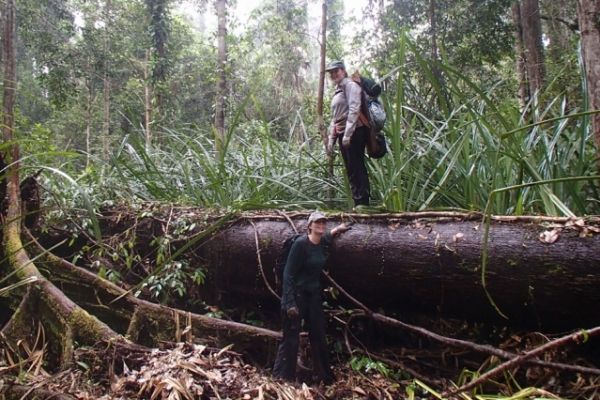In less than three decades, most of Southeast Asia’s peatlands have been wholly or partially deforested, drained, and dried out. This has released carbon that accumulated over thousands of years from dead plant matter, and has led to rampant wildfires that spew air pollution and greenhouse gases into the atmosphere.
The startling prevalence of such rapid destruction of the peatlands, and their resulting subsidence, is revealed in a new satellite-based study conducted by researchers at MIT and in Singapore and Oregon. The research was published today in the journal Nature Geoscience, in a paper by Alison Hoyt PhD ’17, a postdoc at the Max Planck Institute for Biogeochemistry; MIT professor of civil and environmental engineering Charles Harvey; and two others.
Tropical peatlands are permanently flooded forest lands, where the debris of fallen leaves and branches is preserved by the wet environment and continues to accumulate for centuries, rather than continually decomposing as it does in dryland forests. When drained and dried, either to create plantations or to build roads or canals to extract the timber, the peat becomes highly flammable. Even when unburned it rapidly decomposes, releasing its accumulated store of carbon. This loss of stored carbon leads to subsidence, the sinking of the ground surface, in vulnerable coastal areas.
Read more at Massachusetts Institute of Technology
Image: In this photo, Alison Hoyt stands on top of a log during a research trip in a peat swamp forest in Borneo. Tropical peatlands are permanently flooded forest lands, where the debris of fallen leaves and branches is preserved by the wet environment and continues to accumulate for centuries, rather than continually decomposing as it does in dryland forests. Courtesy of Alison Hoyt


